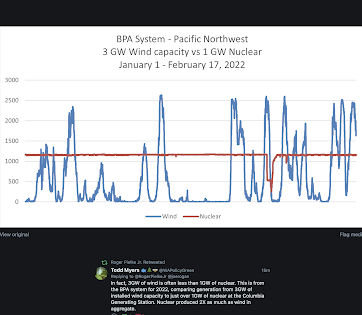Finally! The Role of 'Green' Energy in Destablizing the Grid is Being Recognized
“That resiliency [of the grid] needs to be further enhanced, because the solutions to climate change [green energy] are going to put more challenges on the grid,” Mr. Izzo said. “Those are the kinds of things that really keep you awake at night.”
The historic shift to new sources of energy has created another challenge. A decade ago, coal, nuclear and gas-fired power plants—which can produce power around the clock or fire up when needed—supplied the bulk of the nation’s electricity. Since then, wind and solar farms, whose output depends on weather and time of day, have become some of the most substantial sources of power in the U.S., second only to natural gas.
Grid operators around the country have recently raised concerns that the intermittence [unreliability] of some electricity sources [wind and solar] is making it harder for them to balance supply and demand, and could result in more shortages. When demand threatens to exceed supply, as it has during severe hot and cold spells in Texas and California in recent years, grid operators may call on utilities to initiate rolling blackouts, or brief intentional outages over a region to spread the pain among everyone and prevent the wider grid from a total failure.






Comments
Post a Comment